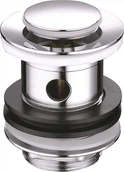Hey there! As a supplier of Rinser Glass, I often get asked about how our products resist scratches. Well, let's dive right into it and explore the science and features that make our Rinser Glass so scratch - resistant.


First off, let's talk about the materials. Our Rinser Glass is crafted from high - quality substances that are inherently tough. For instance, we have Stainless Steel Glass Rinser. Stainless steel is a rock - star material when it comes to durability. It has a high level of chromium, which forms a thin, invisible layer of chromium oxide on the surface. This layer acts as a shield, protecting the steel from oxidation and corrosion. And guess what? It also plays a huge role in scratch resistance. The chromium oxide layer is hard and smooth, making it difficult for sharp objects to dig in and create scratches. When something tries to scrape across the surface, it slides over the protective layer rather than gouging into the metal.
Another option we offer is the Metal Glass Rinser. Different metals are used in its construction, and they're selected for their strength and resilience. Metals like brass or certain alloys have a natural density that gives them a good amount of hardness. They can withstand a fair bit of wear and tear without showing signs of scratching easily. The molecular structure of these metals is tightly packed, which means there are fewer weak points for scratches to start from. When an external force hits the surface, the energy is dispersed across the material instead of concentrating in one spot and causing a scratch.
Now, let's move on to the surface treatment. We don't just rely on the raw materials; we also apply special coatings to enhance scratch resistance. One of the coatings we use is a ceramic - based coating. Ceramic coatings are known for their extreme hardness. They can be applied to the surface of the Rinser Glass in a very thin but uniform layer. This ceramic layer acts like an extra armor. It has a high abrasion resistance, which means it can take a beating from things like keys, utensils, or other hard objects that might come into contact with the Rinser Glass. The coating fills in any microscopic pores or irregularities on the surface, creating a smooth and hard exterior that is less likely to be scratched.
In addition to ceramic coatings, we also use a process called anodizing for some of our products, especially those with an aluminum base. Anodizing is an electrochemical process that thickens the natural oxide layer on the aluminum surface. This thickened oxide layer is not only more resistant to corrosion but also much harder than the original aluminum. It forms a protective barrier that can resist scratches from normal use. The anodized layer is also porous to some extent, which allows for further treatment, like dyeing for different colors, without sacrificing the scratch - resistant properties.
Our Glass Rinser In Matte Black has its own unique way of resisting scratches. The matte finish isn't just for aesthetics; it also has practical benefits. The matte surface scatters light, which can make minor scratches less visible compared to a glossy finish. And the process used to create the matte finish often involves treating the surface to make it more durable. The finish is designed to be tough enough to withstand the rigors of daily use in a kitchen or bar environment.
Let's talk about the design of our Rinser Glass as well. The shape and structure are engineered to minimize the risk of scratches. For example, the edges are rounded instead of being sharp. Sharp edges are more likely to catch on things and get scratched. By having rounded edges, the Rinser Glass can slide over objects without getting snagged. Also, the overall form of the Rinser Glass is designed to be sturdy. It has a stable base that keeps it firmly in place when in use. This stability reduces the chances of it being knocked around and getting scratched.
Maintenance also plays a role in keeping the Rinser Glass scratch - free. We recommend using soft, non - abrasive cleaning materials. Harsh scrubbers or abrasive cleaners can damage the surface and reduce its scratch - resistant properties. A simple microfiber cloth and a mild detergent are usually enough to keep the Rinser Glass looking clean and new. When not in use, storing it in a place where it won't be jostled around with other hard objects can also help prevent scratches.
So, there you have it! A combination of high - quality materials, advanced surface treatments, smart design, and proper maintenance all contribute to how our Rinser Glass resists scratches. Whether you're running a busy bar or just want a top - notch kitchen accessory, our Rinser Glass is built to last.
If you're interested in purchasing our Rinser Glass for your business or home, I'd love to have a chat with you. We can discuss your specific needs, the different models available, and get you the best deal possible. Just reach out, and let's start the conversation about getting you the perfect Rinser Glass.
References:
- "Materials Science and Engineering: An Introduction" by William D. Callister Jr. and David G. Rethwisch
- "Surface Engineering for Corrosion and Wear Resistance" by David J. Shipway and Hugh J. Stone





